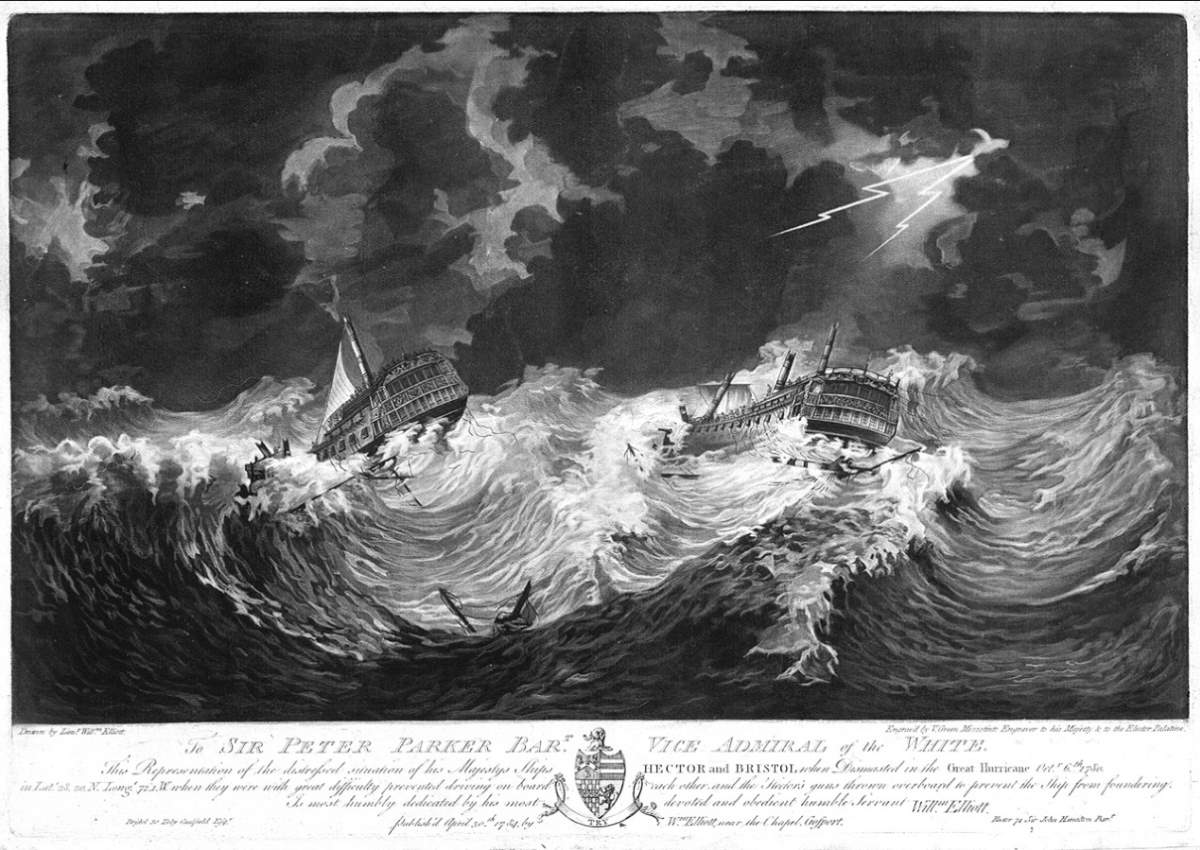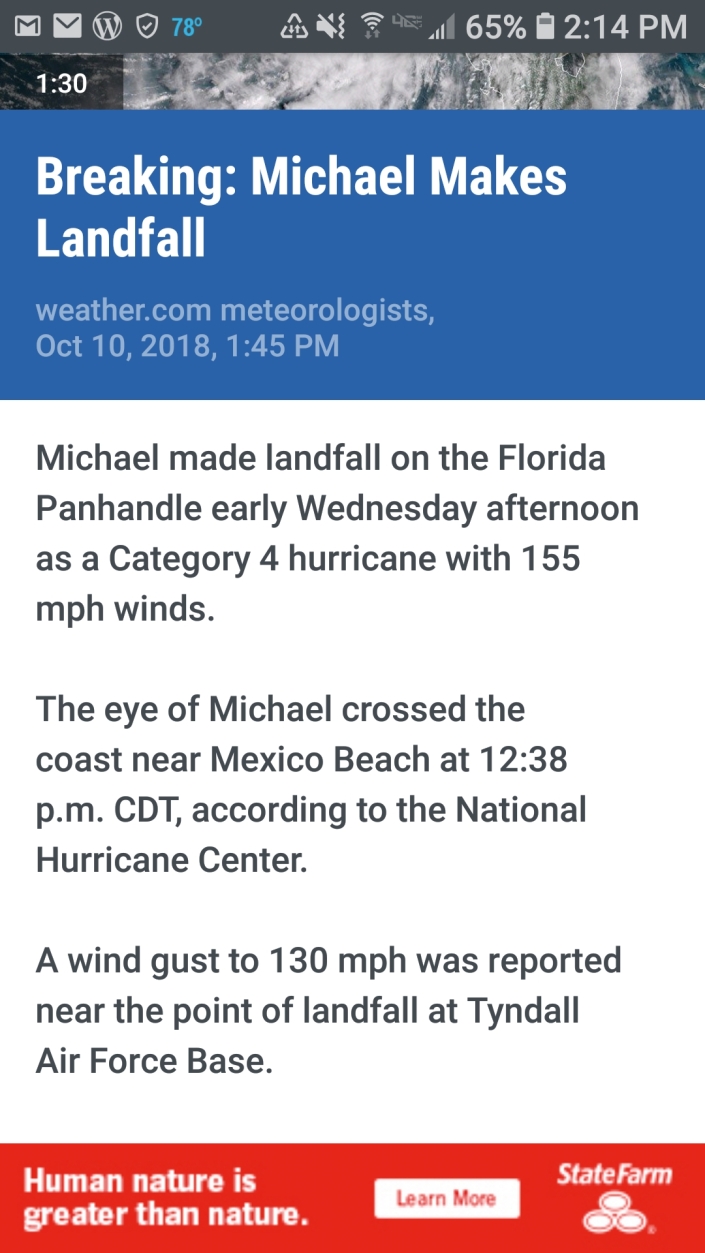gregorian calendar
Wayback Wednesday: Great Hurricane 1780


As Hurricane Michael, a Cat 4 monster, slams the Florida Panhandle (making history, today), the Great Hurricane of 1780 is still the deadliest Atlantic hurricane in recorded history, with a death toll between 22,000 and 27,000+. Also referred to as the Great Hurricane of the Antilles, the 1780 Disaster and the Huracan San Calixto, it was one of four major hurricanes in the 1780 Atlantic hurricane season, the worst hurricane season in recorded history.
On October 10, the San Calixto Hurricane (official name) struck the island of Barbados with, possibly, 200+ mph wind gusts, making it an extreme Cat 5. The winds were so violent and so deafening that, reportedly, “people could not hear their own voices”. It felled most every tree, stripped the bark off the few left standing and nearly destroyed every house on the island. The specifics of the hurricane’s track and exact strength are unknown as the Atlantic hurricane database starts in 1851 but, historical records from Puerto Rico, Jose’ Carlos Milas (Cuban Meteorologist), NOAA and hurricane research from The University of Rhode Island indicate that the storm moved on to St. Lucia, Martinique, Dominica and struck Guadeloupe. It turned towards Puerto Rico, hitting Isla de Mona and, later, the eastern portion of the Dominican Republic. The beast finally reached the Atlantic Ocean on October 15 after passing the Grand Turk Island. It passed Bermuda on October 18 and was last seen two days later off the coast of Cape Race in Newfoundland.
From Hurricane Science at The University of Rhode Island:
Coming in the midst of the American Revolutionary War, the 1780 hurricanes caused heavy losses to European fleets fighting for control of the New World’s Atlantic coast. A fleet of 40 French ships capsized off Martinique during the Great Hurricane, drowning approximately 4,000 soldiers. On St. Lucia, rough waves and a strong storm surge destroyed the British fleet of Admiral Rodney at Port Castries. Much of the British fleet was decimated by the three storms, and the English presence in the western North Atlantic was greatly reduced thereafter.
The worst losses, however, were suffered by Vice Admiral Peter Parker and Rear Admiral Joshua Rowley.
Other interesting October 10 history:
1582…..Due to the shift from the Julian calendar to the Gregorian calendar, today does not exist.
1845…..The Naval School (U.S. Naval Academy) opens.
1967…..The Outer Space Treaty goes into effect (yes, this is a thing).
1973…..Spiro Agnew, Richard Nixon‘s first Vice President, resigns after pleading guilty to federal income tax evasion.
1985…..U.S. Navy F-14s intercept the Egyptian plane carrying the hijackers of the MS Achille Lauro and force it to land in Sicily. The hijackers are arrested.
Busy, busy day… ~Victoria
This entry was posted in History and tagged 1582, 1780, 1845, 1967, 1973, admiral parker, admiral rodney, admiral rowley, american revolutionary war, atlantic hurricanes, barbados, bermuda, british fleet, cape race, category 4, category 5, dominica, dominican republic, french fleet, grand turk island, great hurricane, gregorian calendar, guadeloupe, huracan san calixto, hurricane michael, income tax evasion, isla de mona, jose carlos milas, julian calendar, lesser antilles, martinique, naval academy, newfoundland, noaa, october 10, outer space treaty, port castries, puerto rico, richard nixon, saint lucia, spiro agnew, university of rhode island.